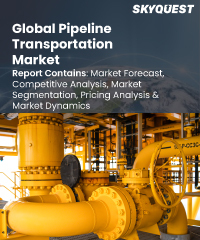
Report ID: SQMIG20F2007

Report ID:
SQMIG20F2007 |
Region:
Global |
Published Date: March, 2024
Pages:
202
|
Tables:
91 |
Figures:
78
Pipeline Transportation Market Drivers
Increased Oil Pipeline Regulations to Increase Demand for Pipeline Transport Solutions
The expansion of pipeline distribution and transmission networks has gained momentum due to the growing demand for oil and gas resources. However, the swift development has been accompanied by a number of unprecedented pipeline incidents. These incidents have led to heightened regulatory standards, prompting bodies like the Pipeline and Hazardous Materials Safety Administration (PHMSA), National Energy Board (NEB), and Petroleum and Natural Gas Regulatory Board to establish policies and rules aimed at enhancing the pipeline transportation sector. The dynamic and evolving nature of these regulations, which often require significant time and effort to adapt to, underscores the importance of seeking additional support, thereby reinforcing the necessity for consulting and managed services.
Pipeline Transportation Market Restraints
Environmental Concerns
Our industry expert will work with you to provide you with customized data in a short amount of time.
REQUEST FREE CUSTOMIZATIONWant to customize this report? This report can be personalized according to your needs. Our analysts and industry experts will work directly with you to understand your requirements and provide you with customized data in a short amount of time. We offer $1000 worth of FREE customization at the time of purchase.

Report ID: SQMIG20F2007